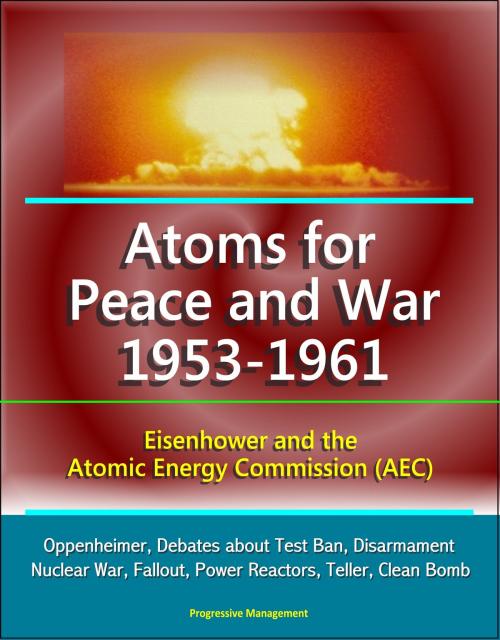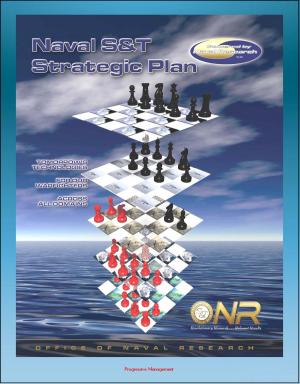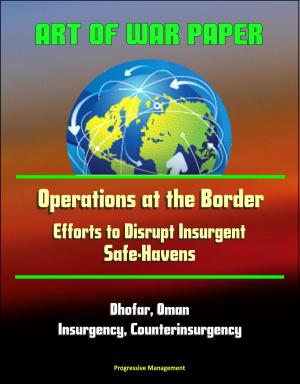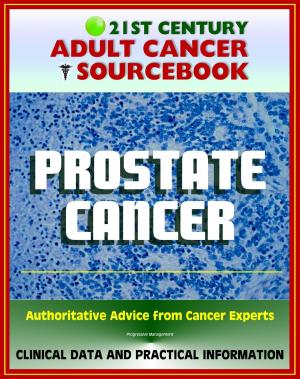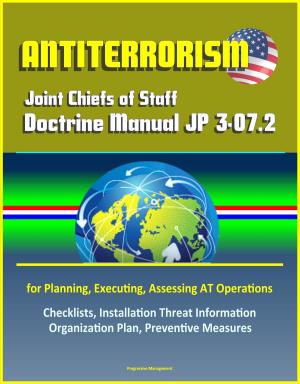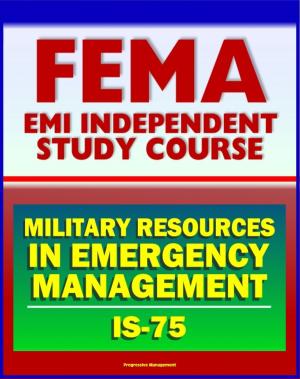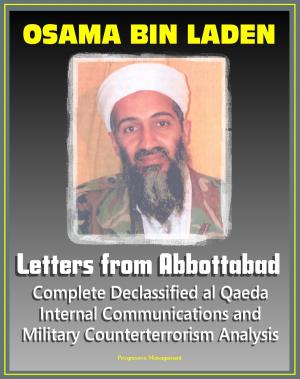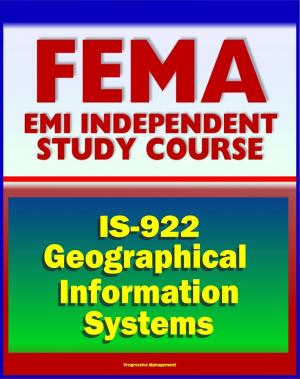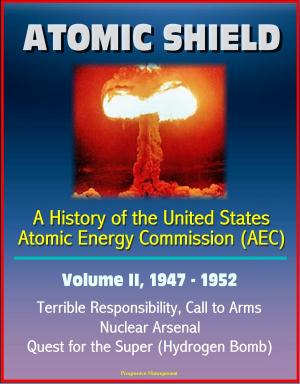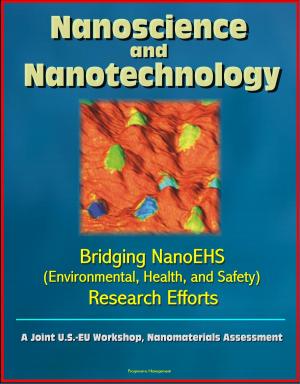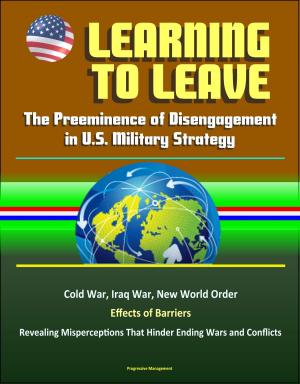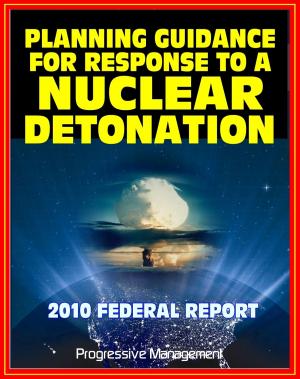Atoms for Peace and War 1953-1961: Eisenhower and the Atomic Energy Commission (AEC) - Oppenheimer, Debates about Test Ban, Disarmament, Nuclear War, Fallout, Power Reactors, Teller, Clean Bomb
Nonfiction, History, Military, Nuclear Warfare, Modern, 20th Century| Author: | Progressive Management | ISBN: | 9781311634900 |
| Publisher: | Progressive Management | Publication: | August 21, 2014 |
| Imprint: | Smashwords Edition | Language: | English |
| Author: | Progressive Management |
| ISBN: | 9781311634900 |
| Publisher: | Progressive Management |
| Publication: | August 21, 2014 |
| Imprint: | Smashwords Edition |
| Language: | English |
This volume, the third in the official history of the Atomic Energy Commission, makes sizable contributions in several areas, including the Eisenhower presidency. During the years in which work on the book has moved forward, that presidency has been one of historiographical frontiers, an area of exciting explorations and new developments. A "revisionism" has emerged to challenge a conception that had taken shape earlier and was quite negative in its appraisal of Eisenhower. Some findings of the revisionists now seem quite firmly established, but the new interpretation has not swept the field. Challenges to it have also appeared. A volume focusing on nuclear energy cannot make contributions to all aspects of the controversy over President Eisenhower, but this book can and does have much to say about some main features of the debate. In the process, the book illustrates, as did the earlier volumes in the series, how very good "official history" can be.
This book on the Atomic Energy Commission is not a narrow history of a government agency. Dealing with the AEC during the period when issues concerning nuclear weapons and nuclear power emerged as large public concerns, the volume ranges well beyond the commission. Much of the work deals with Eisenhower. Although not uncritical, the authors find much to admire in him.
Subjects and topics covered include: Dwight Eisenhower, Harold Stassen, Lewis Strauss, Nuclear Testing, nuclear power, EURATOM, AEC, nuclear test ban, Clinton Anderson (U.S. Senator), Argonne National Laboratory, Hans Bethe, Candor Operation, Castle Test Series, John Foster Dulles, disarmament, nuclear fallout, General Electric, Christian Herfer, Bourke Hickenlooper, Chet Holifield, IAEA, JCAE, Los Alamos, John McCone, Thomas Murray, Richard Nixon, NATO, Oak Ridge, Open Skies, J. Robert Oppenheimer, plutonium, PWR, Hyman Rickover, Seawolf, Roy Snapp, Edward Teller, Soviet Union, USSR, Upshot-Knothole test series, On the Beach movie.
Atoms For Peace and War 1953-1961: Eisenhower and the Atomic Energy Commission * Chapter 1 - A Secret Mission * Chapter 2 - The Eisenhower Imprint * Chapter 3 - The President and the Bomb * Chapter 4 - The Oppenheimer Case * Chapter 5 - The Political Arena * Chapter 6 - Nuclear Weapons: A New Reality * Chapter 7 - Nuclear Power for the Marketplace * Chapter 8 - Atoms for Peace: Building American Policy * Chapter 9 - Pursuit of the Peaceful Atom * Chapter 10 - The Seeds of Anxiety * Chapter 11 - Safeguards, EURATOM, and the International Agency * Chapter 12 - Nuclear Issues: A Time for Decision * Chapter 13 - Nuclear Issues: The Presidential Campaign of 1956 * Chapter 14 - In Search of a Nuclear Test Ban * Chapter 15 - Politics of the Peaceful Atom * Chapter 16 - EURATOM and the International Agency, 1957-1958 * Chapter 17 - Toward a Nuclear Test Moratorium * Chapter 18 - A New Approach to Nuclear Power * Chapter 19 - Science for War and Peace * Chapter 20 - The Test Ban: A Fading Hope * Chapter 21 - The Great Debate
This volume, the third in the official history of the Atomic Energy Commission, makes sizable contributions in several areas, including the Eisenhower presidency. During the years in which work on the book has moved forward, that presidency has been one of historiographical frontiers, an area of exciting explorations and new developments. A "revisionism" has emerged to challenge a conception that had taken shape earlier and was quite negative in its appraisal of Eisenhower. Some findings of the revisionists now seem quite firmly established, but the new interpretation has not swept the field. Challenges to it have also appeared. A volume focusing on nuclear energy cannot make contributions to all aspects of the controversy over President Eisenhower, but this book can and does have much to say about some main features of the debate. In the process, the book illustrates, as did the earlier volumes in the series, how very good "official history" can be.
This book on the Atomic Energy Commission is not a narrow history of a government agency. Dealing with the AEC during the period when issues concerning nuclear weapons and nuclear power emerged as large public concerns, the volume ranges well beyond the commission. Much of the work deals with Eisenhower. Although not uncritical, the authors find much to admire in him.
Subjects and topics covered include: Dwight Eisenhower, Harold Stassen, Lewis Strauss, Nuclear Testing, nuclear power, EURATOM, AEC, nuclear test ban, Clinton Anderson (U.S. Senator), Argonne National Laboratory, Hans Bethe, Candor Operation, Castle Test Series, John Foster Dulles, disarmament, nuclear fallout, General Electric, Christian Herfer, Bourke Hickenlooper, Chet Holifield, IAEA, JCAE, Los Alamos, John McCone, Thomas Murray, Richard Nixon, NATO, Oak Ridge, Open Skies, J. Robert Oppenheimer, plutonium, PWR, Hyman Rickover, Seawolf, Roy Snapp, Edward Teller, Soviet Union, USSR, Upshot-Knothole test series, On the Beach movie.
Atoms For Peace and War 1953-1961: Eisenhower and the Atomic Energy Commission * Chapter 1 - A Secret Mission * Chapter 2 - The Eisenhower Imprint * Chapter 3 - The President and the Bomb * Chapter 4 - The Oppenheimer Case * Chapter 5 - The Political Arena * Chapter 6 - Nuclear Weapons: A New Reality * Chapter 7 - Nuclear Power for the Marketplace * Chapter 8 - Atoms for Peace: Building American Policy * Chapter 9 - Pursuit of the Peaceful Atom * Chapter 10 - The Seeds of Anxiety * Chapter 11 - Safeguards, EURATOM, and the International Agency * Chapter 12 - Nuclear Issues: A Time for Decision * Chapter 13 - Nuclear Issues: The Presidential Campaign of 1956 * Chapter 14 - In Search of a Nuclear Test Ban * Chapter 15 - Politics of the Peaceful Atom * Chapter 16 - EURATOM and the International Agency, 1957-1958 * Chapter 17 - Toward a Nuclear Test Moratorium * Chapter 18 - A New Approach to Nuclear Power * Chapter 19 - Science for War and Peace * Chapter 20 - The Test Ban: A Fading Hope * Chapter 21 - The Great Debate
